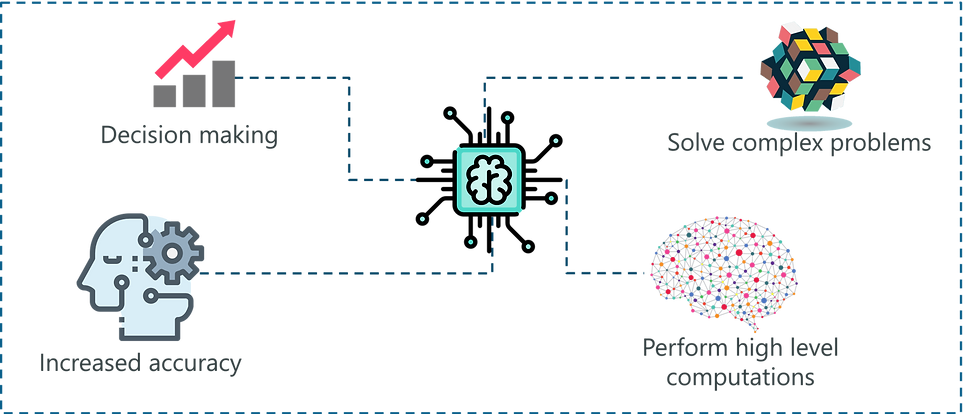How to Use AI for Teachers (2025 Guide)
- Abhinand PS
.jpg/v1/fill/w_320,h_320/file.jpg)
- 3 hours ago
- 3 min read
Introduction: AI in Education Enters the Mainstream
In 2025, AI is no longer a futuristic dream for schools—it’s already reshaping classrooms around the world. Teachers are using AI to prepare personalized lesson plans, automate grading, support struggling students, and manage administrative tasks with ease.
But the real question many educators ask is: How can I actually use AI in teaching without losing the human touch?

This guide walks you through real-world AI applications for teachers, highlighting the best tools and practical methods to save time, reduce stress, and make learning more effective.
Quick Facts: AI in Teaching (2025 Update)
Category | Key Insights |
Global Adoption | 67% of schools now use at least one AI-powered platform |
Teacher Benefits | Saves 6–10 hours weekly on admin & grading |
Top Tools | ChatGPT Edu, Gradescope, Quizizz AI, Canva Classrooms, ClassPoint AI |
Biggest Concern | Balancing AI support with personalized human teaching |
How Teachers Can Use AI in 2025
1. Lesson Planning Automation
AI lesson plan generators quickly create curriculum-aligned lessons tailored to grade level, subject, and student needs.
Example tools: Teachmate AI, ChatGPT Edu, Canva Docs AI
Benefit: Teachers spend more time delivering lessons, less on designing slides or worksheets.
2. Personalized Learning Paths
AI analyzes student performance data to identify skill gaps and recommends tailored exercises.
Platforms like Knewton, Squirrel AI, and Khanmigo help students progress at their own pace.
3. AI-Powered Grading & Feedback
Grading essays, assignments, and MCQs can take hours. AI tools like Gradescope and Turnitin Draft Coach can evaluate submissions quickly, providing actionable feedback while teachers focus on higher-value activities.
4. Classroom Engagement with AI Tools
Interactive AI-powered platforms like Quizizz AI, Nearpod AI, or ClassPoint can create quizzes, polls, and gamified activities instantly.
Keeps students engaged with real-time feedback and adaptive difficulty levels.
5. Language Translation & Accessibility
AI-powered transcription and translation tools, like Microsoft Translator and Otter AI, help multilingual classrooms by providing instant captions, summaries, and accessibility for all learners.
6. Reducing Admin Workload
Scheduling parent-teacher meetings, drafting reports, or compiling attendance reports can be automated with AI agents built into platforms like Google Workspace AI and Classroom Copilots.
Best AI Tools for Teachers in 2025
Tool | Use Case | Why It’s Great for Teachers |
ChatGPT Edu | Lesson planning, Q&A | Creates classroom-ready materials instantly |
Gradescope | Assignment grading | Saves hours on marking essays & quizzes |
Quizizz AI | Student engagement | Auto-generates interactive quizzes |
Canva for Classrooms | Lesson design | Templates for presentations/infographics |
Knewton Alta | Personalized learning | AI-driven practice pathways for students |
Future Trends of AI in Teaching
AI Co-Teachers: AI agents acting as classroom assistants to answer student questions on the spot.
Adaptive AR/VR Lessons: Blending AI avatars with immersive VR history or science classes.
Predictive Analytics in Education: AI predicting which students are at risk of academic struggles, helping teachers intervene early.
Ethics & Digital Literacy: Teaching students not only with AI but about AI—ensuring responsible use.
Expert Insight: My Classroom Experience with AI
Speaking with teachers in both Indian CBSE schools and international IB setups, one thing is clear: AI frees time, but doesn’t replace the teacher.
For example, a history teacher I collaborated with used Canva AI to design infographics and ChatGPT Edu to draft debate prompts. The saved time was reinvested into facilitating discussions and mentorship, which AI cannot replicate.
FAQs: AI for Teachers 2025
1. Can AI replace teachers in the classroom?No. AI is a supportive tool for lesson preparation, grading, and personalization. The human element of empathy, mentorship, and critical thinking remains irreplaceable.
2. What’s the easiest AI tool for teachers just starting out?Begin with Quizizz AI for quizzes or ChatGPT Edu for brainstorming lesson plans—it’s quick, user-friendly, and requires no technical expertise.
3. Is AI safe to use in classrooms?Yes—most certified tools comply with privacy and child protection guidelines (FERPA, GDPR). But teachers should always supervise data use and avoid over-reliance.
Conclusion: AI as a Partner in Education
The rise of AI in education 2025 should not be seen as a threat, but as a partner in teaching. From streamlining lesson planning to supporting personalized student journeys, AI gives teachers more time to do what they do best: inspire and guide students.
For educators who embrace it, AI isn’t replacing teaching—it’s redefining it.
🔗 Suggested Internal Link: Explore my Deep Dive on AI EdTech Tools for Students at abhinandps.com🔗 External Trusted Source: Refer to UNESCO’s AI in Education Policy Guidelines and Edutopia’s classroom innovation research for best practices.



Comments